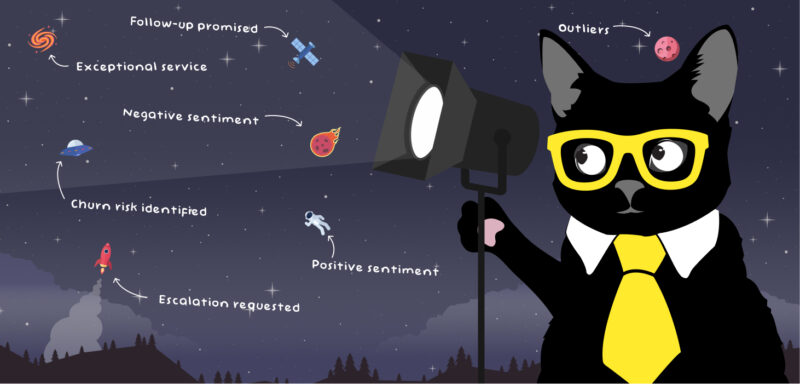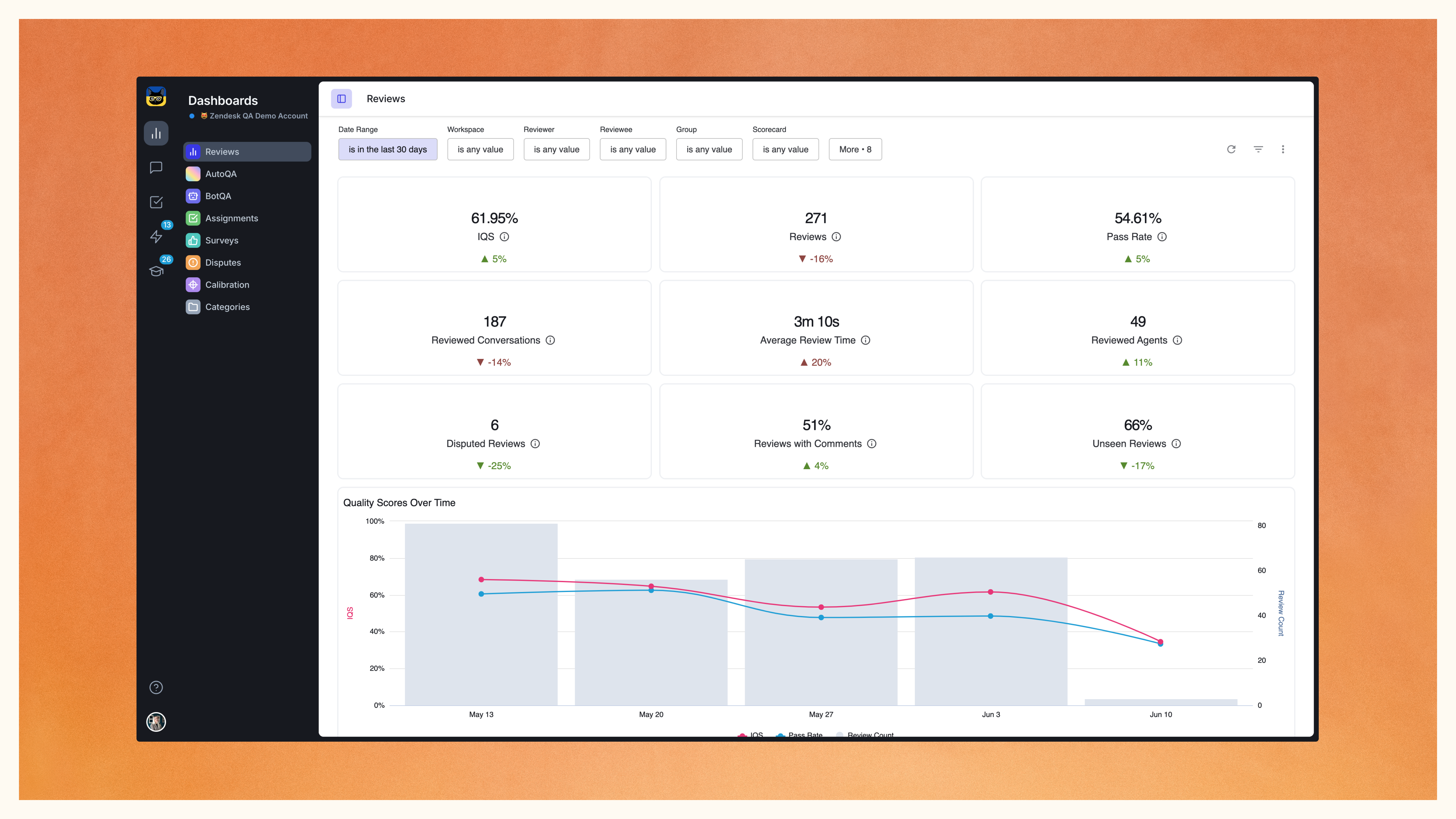When you have a bottomless pool of support conversations to sift through, reviewing a large amount of your tickets is not feasible. Yet you still want to make sure that actionable tickets are prioritized.
Given that only 2-5% of support interactions are typically manually evaluated, the art of conversation sampling becomes key for using your QA resources wisely. It’s about handpicking the meaningful from the ordinary.
Yet, manually sifting through conversations can only get you so far.
Zendesk QA’s (formerly Klaus) AI-powered conversation discovery powerhouse – Spotlight – does the deep-diving for you. Designed to streamline your review process, Spotlight automatically highlights insights and significant interactions for your team.
Additionally, we’re introducing a new AutoQA category – Readability – alongside several enhancements to the AutoQA dashboard.
Stay ahead with Spotlight
Not all interactions are cut from the same cloth, and the most valuable learning experiences often arise from conversations that deviate from the norm.
- Outlier. The original Spotlight filter now lives under a new name. Based on a statistical model, it is like a custom-made intelligent filter that automatically finds must-review conversations that are atypical or unusual for the team.
- Churn risk highlights conversations where a customer has expressed a potential risk for attrition. Currently, churn risk identifies when a customer:
- Expresses the intention to stop being a customer
- Mentions moving to a competitive alternative
- Escalation detects if a customer has asked for higher-level assistance. For example, they have asked to speak to the manager of the support agent. It does not detect internal escalation processes happening outside the conversation.
- Follow-up uncovers if a support representative has been asked to undertake a future course of action.
- Exceptional service highlights interactions where the agent went the extra mile, and the customer showed gratitude.
- Negative sentiment detects parts of the conversation where the customer showed dissatisfaction.
- Positive sentiment detects parts of the conversation where the customer showed delight.
All Spotlight filters, except Outlier and Sentiment, are powered by MS Azure OpenAI.

Surface must-review interactions
Streamlining your review process and discovering automated insights with Spotlight is as straightforward as counting 1-2-3.
- Use the AI-driven filters in the Conversations view to highlight specific conversations.
Even when employing only one filter from the various Spotlight categories, additional identified insights will automatically appear in the review sidebar.
For instance, you choose the ‘Churn risk > Detected’ to find conversations indicating potential churn risk scenarios. In the same conversation, if the agent also provided a promise to follow up on something, and the customer expressed frustration, both ‘Follow up’ and ‘Negative sentiment’ will be highlighted.
- Alternatively, you may use the Spotlight filters to create Assignments that automatically allocate the appropriate tickets for your reviewers to assess.
The new Spotlight filters are available on the AI Suite plan.
Learn more about using Spotlight here >

AutoQA is your first line of defense in quality control
Even with the assistance of automation to simplify conversation sampling, manual QA has its limitations.
Before your human reviewers get their eyes on the list of sampled conversations, employ AutoQA as your first line of quality control.
As it automatically analyzes and scores 100% of your ticket volumes across languages and the activated scorecard categories, it makes a great asset for the ‘first screening’ of your cases.
By incorporating Readability into your QA scorecard, you can make sure that your team delivers information in an easily understandable and efficient way, minimizing the risk of misinterpretation and confusion.
What’s more, when your team caters to a global audience, using simpler language makes your support more easily accessible to a broader range of people – all contributing to a greater customer experience.

In addition to pinpointing which interactions are worth further human investigation, AutoQA serves as an excellent resource for spotting training requirements, pinpointing declines in performance, or areas where agents face challenges.
After AutoQA completes the initial screening for all of your tickets within the activated categories, you can leverage your human resources to focus on the 2-5% of cases that truly demand human review.
Combine AutoQA, Spotlight, and other filters to sample the most critical conversations for review.
What’s best, it also speeds up and automates your actual evaluation process, as the AutoQA categories integrated into your scorecard are pre-scored out of the box.
Get started
Updated AutoQA dashboard
The AutoQA dashboard provides a thorough analytical overview of 100% of your interactions across the available categories.

We’ve implemented various improvements to provide further insights into the performance and accuracy that AutoQA delivers:
- Efficiency gain showcases the boost in your QA performance achieved by using AutoQA reviews instead of manual QA.
- Monitor the average count of conversations AutoQA has reviewed for each reviewee. Compared to manual QA results, it illustrates the extent to which AutoQA aids in providing feedback.
- The acceptance rate displays the % of cases where the AutoQA scores are accepted by users as accurate. The higher the acceptance rate, the more aligned AutoQA is with your user evaluations.
Furthermore, you can now track and open the list of conversations where the AutoQA score was modified by your human reviewer.
Additionally, you can now gain insights into the performance of individual AutoQA categories. Keep track of the category auto-scores, acceptance rate, count of modified AutoQA scores per category, and more.



